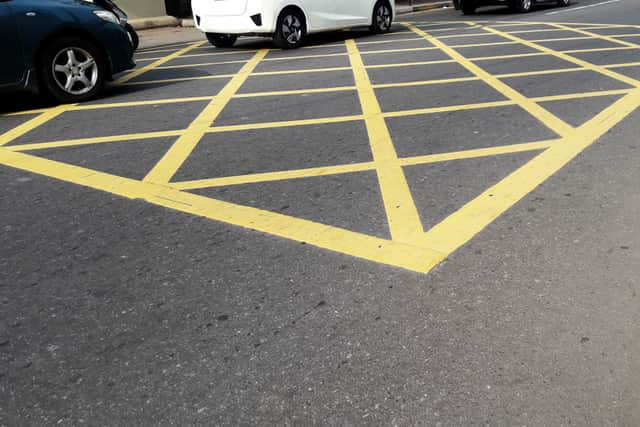Motorists could face ‘avalanche’ of unfair fines as councils get new powers


Drivers in England could face an avalanche of unfair fines from later this year as councils are handed new powers to police traffic offences.
From next month local authorities will be able to apply for powers to enforce moving traffic offences such as ignoring no-entry signs but the RAC is warning that bad road design and poor maintenance could see drivers punished unfairly.
Advertisement
Hide AdAdvertisement
Hide AdIt has urged the Government to set out new guidelines around design, maintenance and enforcement ahead of handing councils any new powers.
At the moment only councils in London and Cardiff are able to issue fines for moving traffic offences, with police responsible for the matter in the rest of the country.


Legislation is currently going through parliament which will allow other councils to apply for the same powers. It is believed councils will have until late May to apply for the right to be the local enforcement authority, with the new controls coming in from 1 June.
Moving traffic offences include matters such as blocking yellow box junctions and ignoring no-entry or no left/right turn signs.
Advertisement
Hide AdAdvertisement
Hide AdUnder the new powers, councils will be able to fine drivers £70 per offence. Between 2016 and 2019 councils in London and Cardiff made £86 million from such penalty charge notices (PCN), raking in £31m in the financial year 2018/19 alone.
The RAC’s head of roads policy Nicholas Lyes said that without clear guidance on the design and enforcement of box junctions, there was a risk of “countless” wrong fines being issued, causing stress for drivers and wasting their time and that of council staff.


He said: “It’s absolutely crucial that yellow box junctions are enforced fairly and, as things stand, this may not be the case which will mean many drivers will be treated poorly and lose out financially as a result.”
His comments come after the RAC commissioned chartered engineer Sam Wright, who was formerly responsible for the design and approval of yellow boxes in London, to write a report on how experiences in the capital could affect drivers elsewhere.
Advertisement
Hide AdAdvertisement
Hide AdHe warned that there was no legal requirement for councils to meet the basic design criteria of junctions and it was down to the competence of the enforcing authority.
Mr Wright explained: “Yellow boxes should be no bigger than is necessary to prevent vehicles obstructing through movements. They are not designed for situations where vehicles are travelling in the same direction.
“The second main condition is that drivers should have adequate visibility beyond the box to be able to make a clear judgement before entering it. It’s not just that drivers need to see the end of the box, they need to see that there is space beyond the box for their vehicle to fit.”
The RAC has raised concerns that many junctions already fail to meet these criteria either through bad design and placement or poor maintenance of markings, leaving drivers exposed to unfair penalties.
Advertisement
Hide AdAdvertisement
Hide AdMr Lyes said: “In the absence of definitive guidance on the design, maintenance and enforcement of box junctions there will be a high degree of confusion among drivers and local authorities which could lead to an avalanche of penalty charge notices being wrongly issued and then having to be appealed.
“We have written to the Department for Transport asking them to update the guidance to make it clear to local authorities what the minimum standard for design and condition of a box junction should be before letting enforcement begin, but they are adamant the present guidance is sufficient.
“We are worried that failing to update guidance to include the lessons learnt from more than 15 years of enforcement in London will lead to countless wrong fines being issued, no end of unnecessary stress for drivers who feel they have been unfairly treated and thousands of wasted council hours investigating appeals.”
